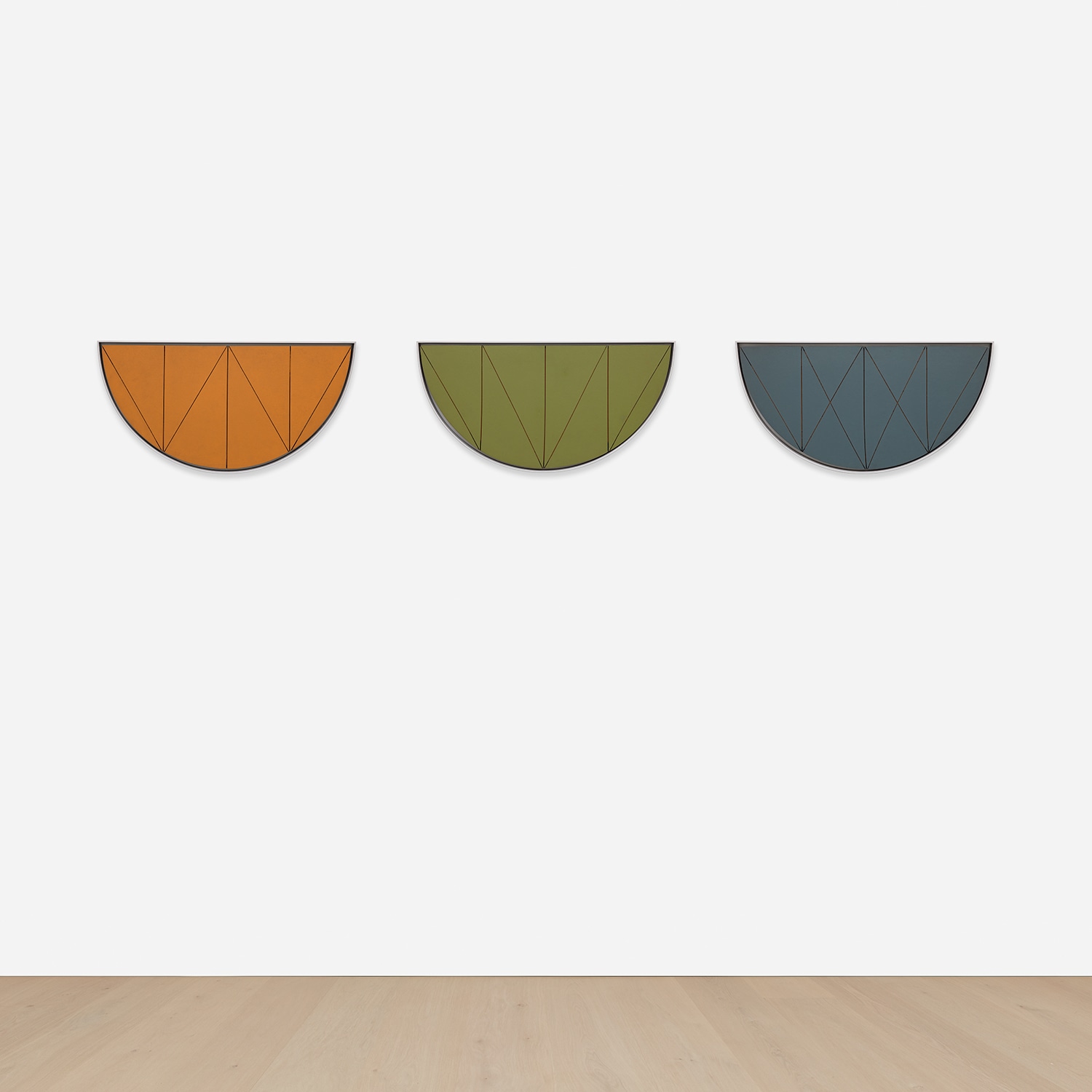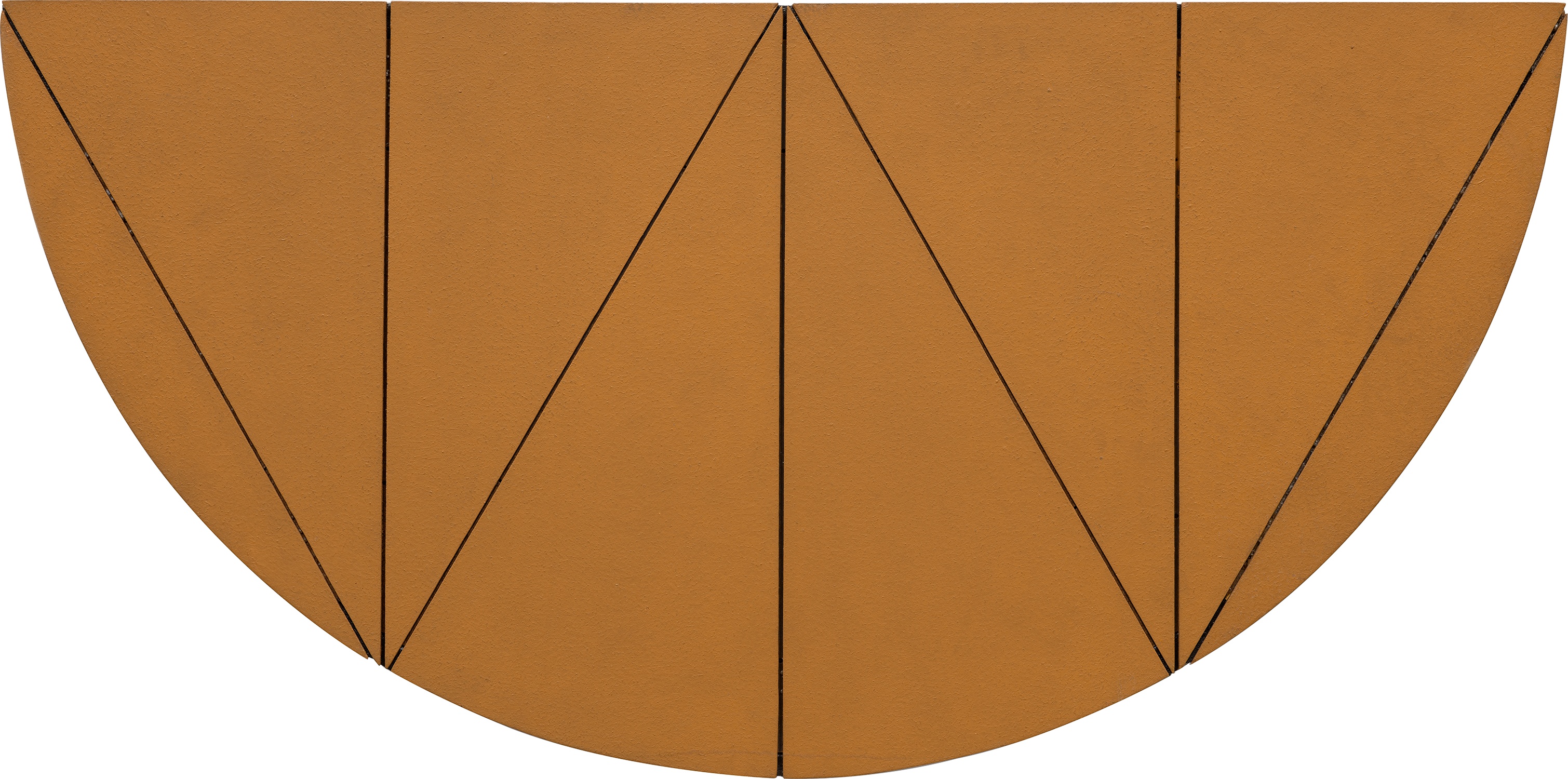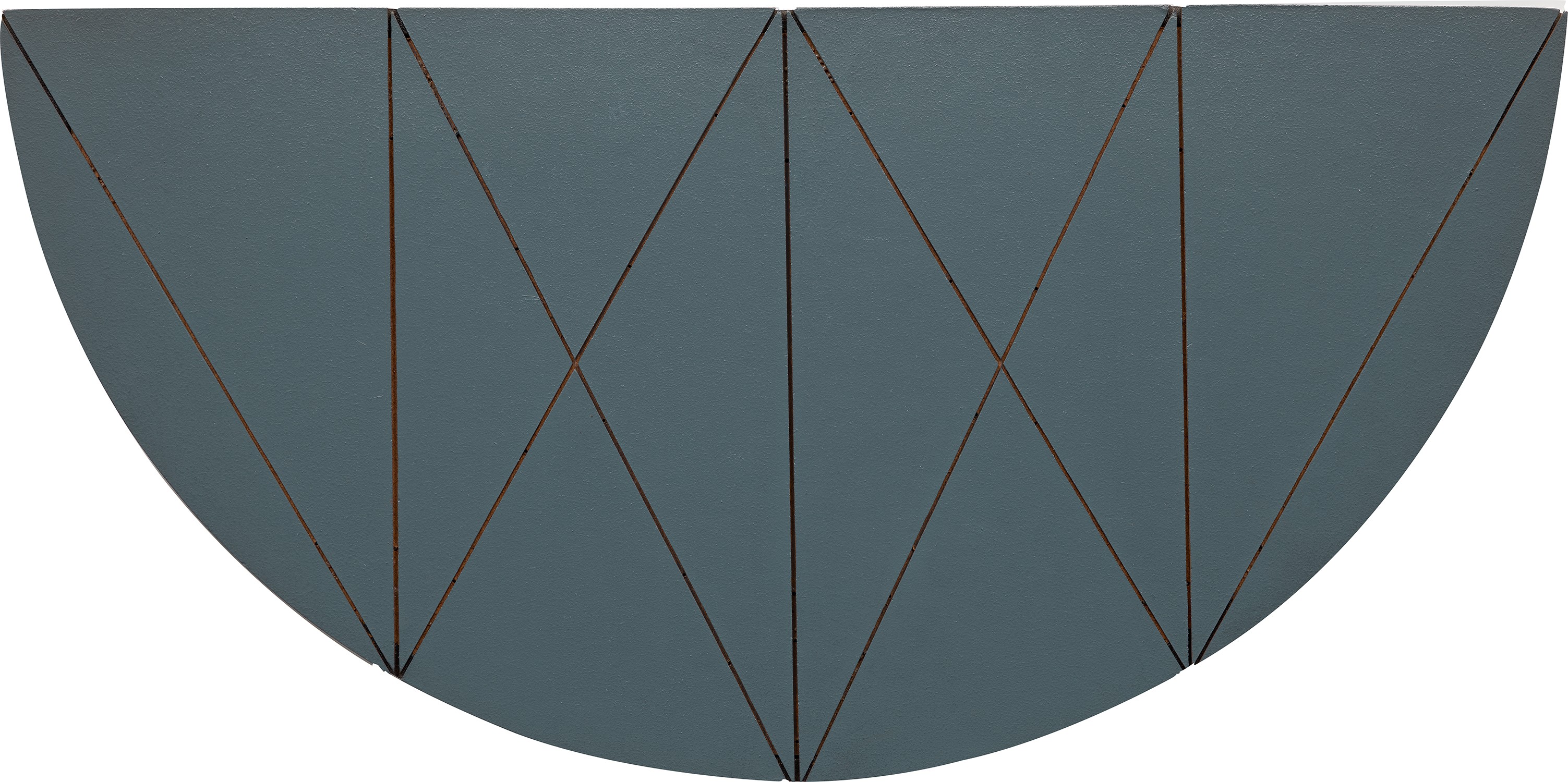







18
Robert Mangold
Three works: (i) 1/2 W Series (Orange); (ii) 1/2 V Series (Green); (iii) 1/2 X Series (Blue)
each signed, respectively titled and dated “1/2 [W, V, X] Series R. Mangold 1968” on the reverse
acrylic on Masonite
each 12 x 24 in. (30.5 x 61 cm)
Executed in 1968.